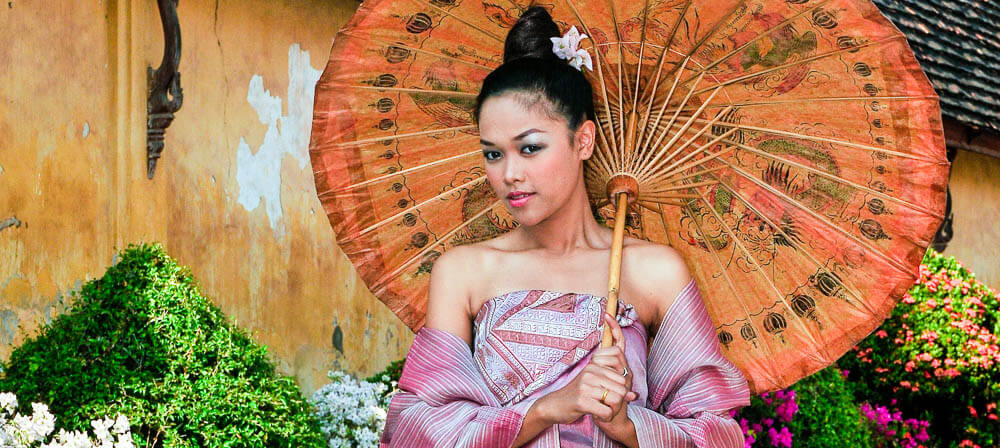About 55% of the population belongs to the Lao group. It is the largest ethnic group of the country to which it gave both its name and official language.
The Lao live primarily in lowland areas and along riverbanks, farming paddy rice. They eat sticky rice (khao niaow), which is a distinctive production of the country.
The Lao practice Theravada Buddhism and combine it with animism, a strong belief in spirits. One of their best-known and most practiced ceremonies is the baci. It is led by a village elder to bestow blessings on a person or people or to mark an important event. Another name for this ceremony, soukhwan, means “calling of the souls”. It refers to the belief that people are made of 32 spirits or vital forces, that must come together for optimum health and harmony.
Tai Lao are well known for their skilled silk and cotton weaving, which can be seen in markets and the traditional clothing worn by locals. Traditionally, women wear a tube skirt called a sin and a blouse with a shoulder scarf, while men would wear a sarong and jacket. However, western clothing is increasingly becoming the norm for everyday wear, in particular for men.
Every Lao village has a temple, which acts as the centre of education, accommodation, meetings, and religious rituals. Traditionally, every male over the age of 12 has to enter a monkhood at a temple for a period of time.
Traditional Lao homes are built 2.5 meters to 3 meters above the ground with a big balcony where people can rest or meet visitors. Underneath the houses, families usually set up a loom, or keep farming equipment or livestock.


